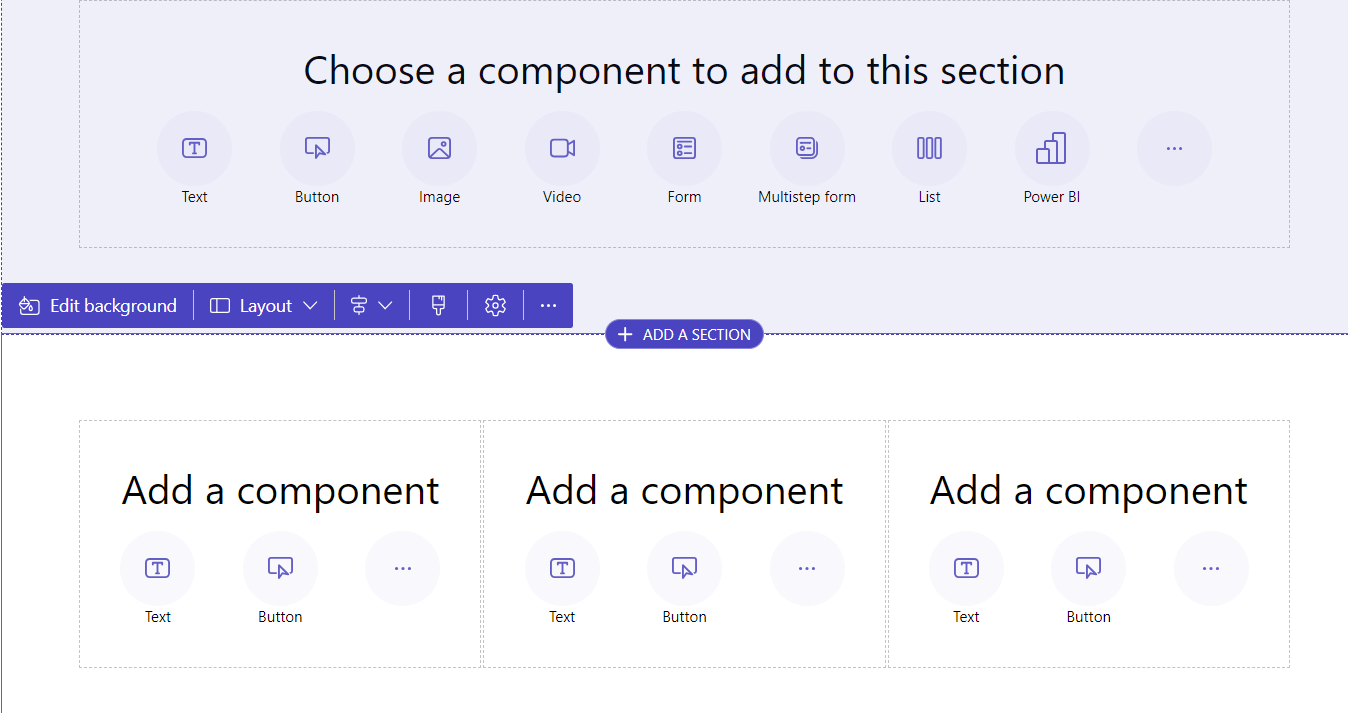I started my journey by learning the basics of Power Pages using
Microsoft’s online training modules, followed by a short tutorial from my colleague. My main objective was to take an existing word document and then transfer it over to Power Pages section by section. This included text, images, as well as linking certain text.
While this process is rather straightforward, I did encounter a minor issue using this system; the text would often duplicate when I copied and pasted it from the word document. This became rather finicky at times, causing me to have to go through everything section by section to assure its perfection. Nevertheless, Power Pages excels at being aesthetically pleasing to its users. Being able to use its readymade templates as well as create your own custom site makes Power Pages an easy favorite for those with an artistic eye. On top of that, one needs little to no coding experience in order to use this application.
Adding components
 Example Templates
Example Templates

After getting used to Power Pages, it was time to transfer the documents to Power Portal. This application is a blank slate which allows users to start from scratch. Conversely, Power Portal relies heavily on the users coding abilities to create complex sites. To new users unfamiliar with Liquid Code, this could be a challenge. However, if the task is simply to transfer existing text and images to the platform, Power Portal has you covered! I found it to be very straight forward, the only minor inconvenience being that users must first upload their photos before pasting them into the application.
Example Using Power portal

Overall, these applications are both very solid choices. With each their own strengths, it all comes down to the users’ capabilities to harness them. As it concerns new users, I recommend Power Pages for one reason: the simplicity of premade templates. Nevertheless, as you familiarize yourself with the process of website development and begin to create more complex website features, Power Portal offers users the most versatile application.



